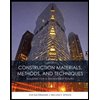
Materials Science And Engineering Properties
1st Edition
ISBN: 9781111988609
Author: Charles Gilmore
Publisher: Cengage Learning
expand_more
expand_more
format_list_bulleted
Question
Chapter 7, Problem 34CQ
To determine
The temperature below which the tempering of glass is done.
Expert Solution & Answer
Trending nowThis is a popular solution!

Students have asked these similar questions
need help. explain plz
-Design the traffic signal intersection using all red 2 second, for all phase the truck percent
5% for all movement, and PHF -0.95 Check for capacity only
Approach
Through volume
Right volume
Left volume
Lane width
Number of lane
Veh/hr
Veh/hr
Veh/hr
m
North
700
100
150
3.0
3
south
600
75
160
3.0
3
East
300
80
50
4.0
R
west
400
50
55
4.0
2
need help
Chapter 7 Solutions
Materials Science And Engineering Properties
Ch. 7 - Prob. 1CQCh. 7 - Prob. 2CQCh. 7 - Prob. 3CQCh. 7 - Prob. 4CQCh. 7 - Prob. 5CQCh. 7 - Prob. 6CQCh. 7 - Prob. 7CQCh. 7 - Prob. 8CQCh. 7 - Prob. 9CQCh. 7 - Prob. 10CQ
Ch. 7 - Prob. 11CQCh. 7 - Prob. 12CQCh. 7 - Prob. 13CQCh. 7 - Prob. 14CQCh. 7 - Prob. 15CQCh. 7 - Prob. 16CQCh. 7 - Prob. 17CQCh. 7 - Prob. 18CQCh. 7 - Prob. 19CQCh. 7 - Prob. 20CQCh. 7 - Prob. 21CQCh. 7 - Prob. 22CQCh. 7 - Prob. 23CQCh. 7 - Prob. 24CQCh. 7 - Prob. 25CQCh. 7 - Prob. 26CQCh. 7 - Prob. 27CQCh. 7 - Prob. 28CQCh. 7 - Prob. 29CQCh. 7 - Prob. 30CQCh. 7 - Prob. 31CQCh. 7 - Prob. 32CQCh. 7 - Prob. 33CQCh. 7 - Prob. 34CQCh. 7 - Prob. 35CQCh. 7 - Prob. 36CQCh. 7 - Prob. 37CQCh. 7 - Prob. 38CQCh. 7 - Prob. 39CQCh. 7 - Prob. 40CQCh. 7 - Prob. 41CQCh. 7 - Prob. 42CQCh. 7 - Prob. 43CQCh. 7 - Prob. 44CQCh. 7 - Prob. 45CQCh. 7 - Prob. 46CQCh. 7 - Prob. 47CQCh. 7 - Prob. 48CQCh. 7 - Prob. 49CQCh. 7 - Prob. 50CQCh. 7 - Prob. 51CQCh. 7 - Prob. 52CQCh. 7 - Prob. 1DRQCh. 7 - Prob. 2DRQCh. 7 - Prob. 3DRQCh. 7 - Prob. 4DRQCh. 7 - Prob. 5DRQCh. 7 - Prob. 6DRQCh. 7 - Prob. 7DRQCh. 7 - Prob. 8DRQCh. 7 - Prob. 1ETSQCh. 7 - Prob. 2ETSQCh. 7 - Prob. 3ETSQCh. 7 - Prob. 4ETSQCh. 7 - Prob. 5ETSQCh. 7 - Prob. 6ETSQCh. 7 - Prob. 7ETSQCh. 7 - Prob. 8ETSQCh. 7 - Prob. 9ETSQCh. 7 - Prob. 7.1PCh. 7 - Prob. 7.2PCh. 7 - Prob. 7.3PCh. 7 - Prob. 7.4PCh. 7 - Prob. 7.5PCh. 7 - Prob. 7.6PCh. 7 - Prob. 7.7PCh. 7 - Prob. 7.8PCh. 7 - Prob. 7.9PCh. 7 - Prob. 7.10PCh. 7 - Prob. 7.11PCh. 7 - Prob. 7.13P
Knowledge Booster
Similar questions
- For the beam show below, draw A.F.D, S.F.D, B.M.D A 2 N M 10 kN.m B 2 M Carrow_forwardB: Find the numerical solution for the 2D equation below and calculate the temperature values for each grid point shown in Fig. 2 (show all steps). (Do only one trail using following initial values and show the final matrix) T₂ 0 T3 0 I need a real solution, not artificial intelligence locarrow_forward: +0 العنوان use only Two rods fins) having same dimensions, one made orass (k = 85 Wm K) and the mer of copper (k = 375 W/m K), having of their ends inserted into a furna. At a section 10.5 cm a way from furnace, the temperature of brass rod 120 Find the distance at which the ame temperature would be reached in the per rod ? both ends are ex osed to the same environment. ns 2.05 ۲/۱ ostrararrow_forward
- I need a real solution, not artificial intelligencearrow_forwardI need detailed help solving this exercise from homework of Applied Mechanics. I do not really understand how to do, please do it step by step, not that long but clear. Thank you!arrow_forwardI need detailed help solving this exercise from homework of Applied Mechanics. I do not really understand how to do, please do it step by step, not that long but clear. Thank you!arrow_forward
- I need detailed help solving this exercise from homework of Applied Mechanics. I do not really understand how to do, please do it step by step, not that long but clear. Thank you!arrow_forwardI need detailed help solving this exercise from homework of Applied Mechanics. I do not really understand how to do, please do it step by step, not that long but clear. Thank you!arrow_forwardI need detailed help solving this exercise from homework of Applied Mechanics. I do not really understand how to do, please do it step by step, not that long but clear. Thank you!arrow_forward
- I need detailed help solving this exercise from homework of Applied Mechanics. I do not really understand how to do, please do it step by step, not that long but clear. Thank you!arrow_forwardI need detailed help solving this exercise from homework of Applied Mechanics. I do not really understand how to do, please do it step by step, not that long but clear. Thank you!arrow_forwardI need detailed help solving this exercise from homework of Applied Mechanics. I do not really understand how to do, please do it step by step, not that long but clear. Thank you!arrow_forward
arrow_back_ios
SEE MORE QUESTIONS
arrow_forward_ios
Recommended textbooks for you
 Materials Science And Engineering PropertiesCivil EngineeringISBN:9781111988609Author:Charles GilmorePublisher:Cengage Learning
Materials Science And Engineering PropertiesCivil EngineeringISBN:9781111988609Author:Charles GilmorePublisher:Cengage Learning Construction Materials, Methods and Techniques (M...Civil EngineeringISBN:9781305086272Author:William P. Spence, Eva KultermannPublisher:Cengage Learning
Construction Materials, Methods and Techniques (M...Civil EngineeringISBN:9781305086272Author:William P. Spence, Eva KultermannPublisher:Cengage Learning

Materials Science And Engineering Properties
Civil Engineering
ISBN:9781111988609
Author:Charles Gilmore
Publisher:Cengage Learning

Construction Materials, Methods and Techniques (M...
Civil Engineering
ISBN:9781305086272
Author:William P. Spence, Eva Kultermann
Publisher:Cengage Learning